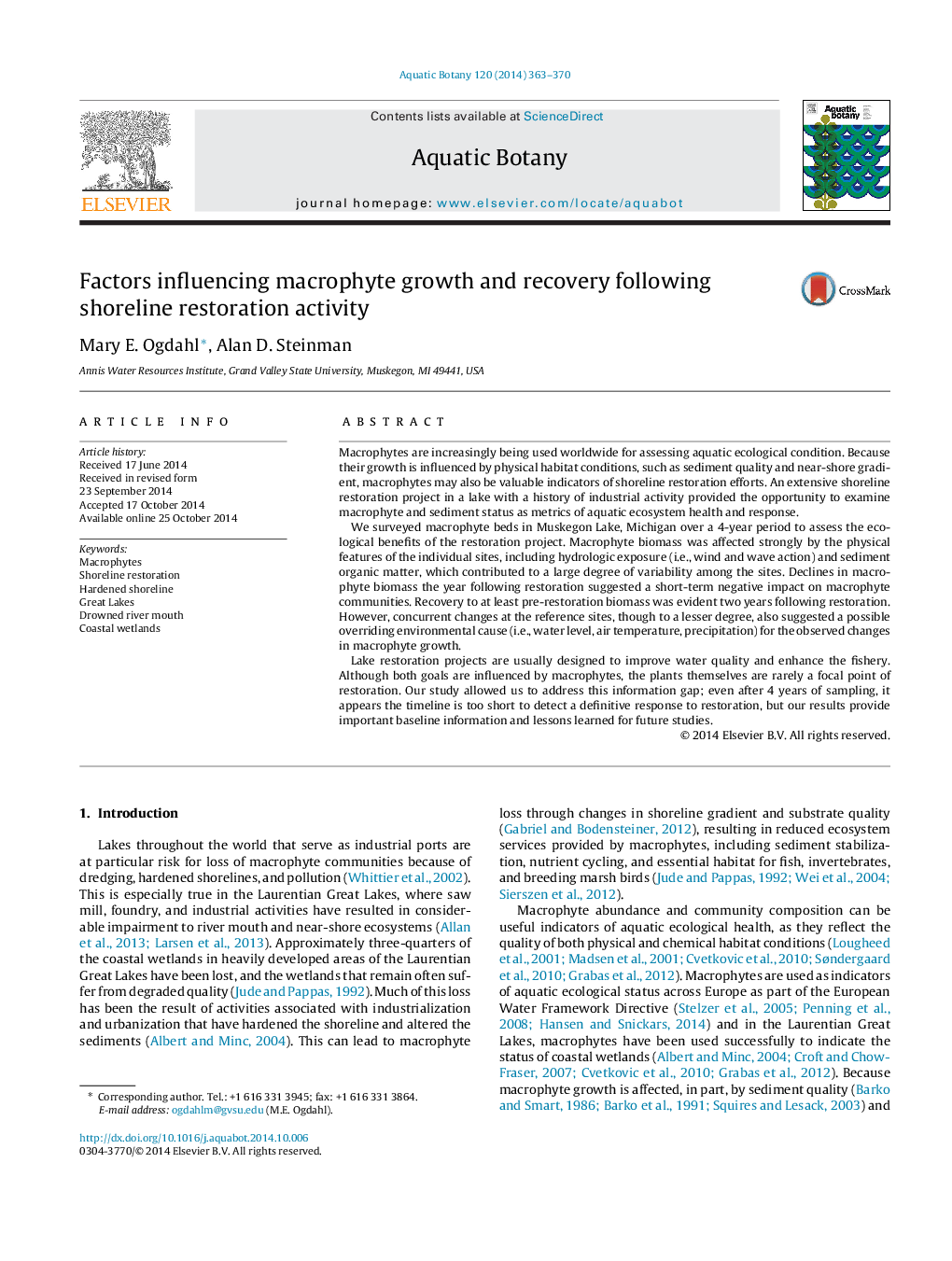| کد مقاله | کد نشریه | سال انتشار | مقاله انگلیسی | نسخه تمام متن |
|---|---|---|---|---|
| 4527724 | 1625822 | 2015 | 8 صفحه PDF | دانلود رایگان |
• We examine macrophytes as metrics of aquatic health following restoration.
• Macrophyte biomass was affected strongly by the physical features of the sites.
• Changes in macrophyte biomass suggested a short-term negative restoration impact.
• Distinguishing restoration response from environmental effects requires more study.
Macrophytes are increasingly being used worldwide for assessing aquatic ecological condition. Because their growth is influenced by physical habitat conditions, such as sediment quality and near-shore gradient, macrophytes may also be valuable indicators of shoreline restoration efforts. An extensive shoreline restoration project in a lake with a history of industrial activity provided the opportunity to examine macrophyte and sediment status as metrics of aquatic ecosystem health and response.We surveyed macrophyte beds in Muskegon Lake, Michigan over a 4-year period to assess the ecological benefits of the restoration project. Macrophyte biomass was affected strongly by the physical features of the individual sites, including hydrologic exposure (i.e., wind and wave action) and sediment organic matter, which contributed to a large degree of variability among the sites. Declines in macrophyte biomass the year following restoration suggested a short-term negative impact on macrophyte communities. Recovery to at least pre-restoration biomass was evident two years following restoration. However, concurrent changes at the reference sites, though to a lesser degree, also suggested a possible overriding environmental cause (i.e., water level, air temperature, precipitation) for the observed changes in macrophyte growth.Lake restoration projects are usually designed to improve water quality and enhance the fishery. Although both goals are influenced by macrophytes, the plants themselves are rarely a focal point of restoration. Our study allowed us to address this information gap; even after 4 years of sampling, it appears the timeline is too short to detect a definitive response to restoration, but our results provide important baseline information and lessons learned for future studies.
Journal: Aquatic Botany - Volume 120, Part B, January 2015, Pages 363–370
